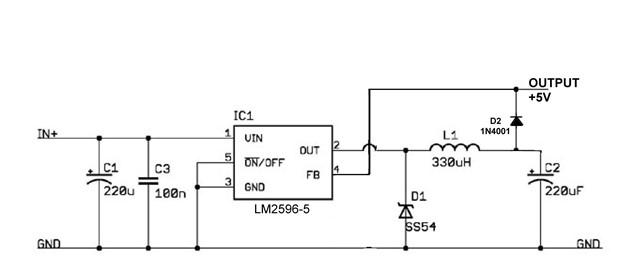Tool/software:
I am powering a board with 5V from an LM2596-5. Reprogramming is by a USB connection to the board, during which time the 12V supply to the LM2596 is grounded through the resistance of other circuitry, and the board's 5V power comes from the USB.
Can I rely on the LM2596 output terminal allowing this without damage or excessive (>100mA) power loss?
If not, is it safe to insert a 1N4001 (or similar) between the output terminal and capacitor of the LM2596 and its feedback terminal, and take my regulated 5V output from its cathode when not using USB power?


